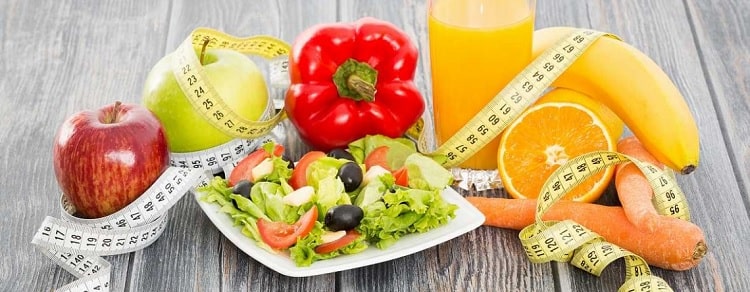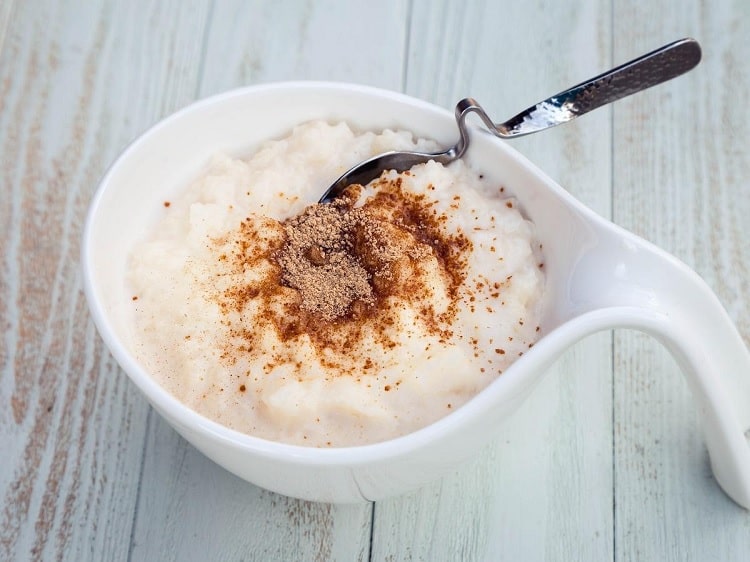Maximize Your Nutrition and Minimize Your Waistline: Discover the 20 Best Vegetables for Weight Loss
Losing weight is a long-term goal in the lives of a majority of people around the world. However, there are numerous weight loss techniques available on the internet. Finding a suitable weight loss strategy can thus be challenging. This is because each one of us has a unique body composition and different goals.
It is thus best to plan your diet based on your daily calorie needs, weight, height, goals, and preferences. When it comes to weight loss, you can’t go wrong with vegetables. Including veggies in your diet is one of the most effective ways to lose weight. Making healthy dietary choices will help you reach your fitness goals without compromising your health.
Veggies are a great option to lose weight naturally. With a wide variety of vegetables available for consumption, you might find it hard to choose the ones that can deliver the desired outcomes for weight loss. In this article, we suggest twenty healthy vegetables that can help you lose weight steadily and significantly.
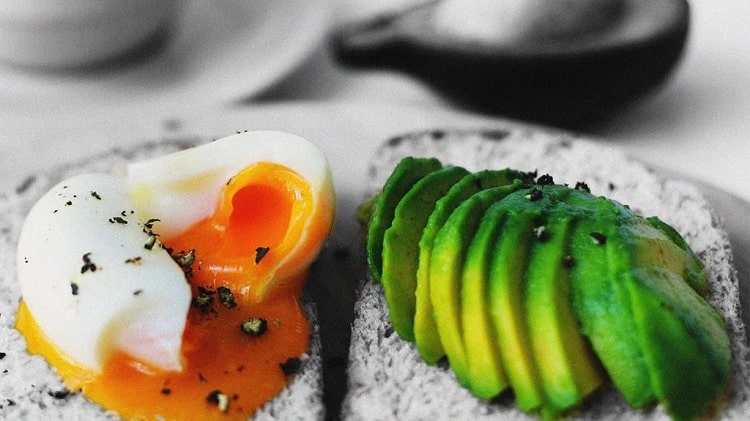
Can Vegetables Help You Lose Weight?
If you want to reduce weight naturally, you must make some dietary changes. Replacing unhealthy foods with veggies in your diet will help with weight loss. The fiber and water content in vegetables keep you full for long hours and thus prevent overconsumption of calories. To lose a significant amount of body weight, you should reduce your energy intake to less than what your body expends each day.
Vegetables provide you with plenty of nutrients that are beneficial for weight loss and overall health. Since vegetables are low in calories, they can aid in weight loss. Vegetables are high in fiber and water, both of which suppress your appetite and reduce excess calorie intake. Fiber is an essential nutrient that slows down digestion and increases satiety, thus supporting weight loss.
When you increase fiber intake, you have a reduced risk of blood sugar and insulin spikes. Blood sugar spikes lead to increased hunger levels, which results in weight loss. The fiber content in vegetables helps control blood sugar levels, which can reduce fat storage. Veggies are high in water, which has both appetite-suppressing and fat-burning properties.
A randomized trial published in the European Journal of Clinical Nutrition in 2014 demonstrated that incorporating five servings of vegetables into a healthy, low-energy diet resulted in sustained weight loss in participants. This study also found total dietary energy to be the most significant dietary variable for weight loss. Consuming veggies as part of a healthy, low-calorie diet can help you achieve a dietary energy deficit and lose weight sustainably.
How to Choose Vegetables for Weight Loss?
When choosing vegetables for weight loss, consider a few things to reach your weight loss goals steadily. Most healthy weight-loss foods have these variables in common. We shall look into these factors to determine suitable healthy and fat-burning vegetables.
- High protein percentage: While choosing vegetables for weight loss, consider the ones with a high protein percentage. Protein is an essential macronutrient that suppresses your appetite, helps burn body fat, and prevents muscle loss. Studies show that protein has a positive impact on weight loss. You can also include healthy veggies with a high-protein diet to lose body fat.
- High fiber content: Vegetables with high-fiber content can keep you satiated and make you consume fewer calories. Fiber is an indigestible carbohydrate present naturally in plant-based foods. A highlight of this nutrient is that it reduces calorie absorption, which makes it ideal for weight loss. Even though all vegetables contain fiber, the amounts vary among different varieties. This is why it is best to go for the ones with high fiber content.
- Low energy density: The number of calories per gram of food is often referred to as energy density. Foods with low energy densities imply foods with fewer calories. Vegetables with low energy densities are an ideal option for weight loss. This is because they are likely to contain a lot of water or fiber, both of which are low in calories and support weight loss.
Along with these factors, portion sizes also have an impact on your weight. Therefore, plan your diet with optimal portions of vegetables for weight loss.
The 20 Best Vegetables for Weight Loss
Based on the nutritional advantages of vegetables, we have gathered and provided below the 20 best vegetables for weight loss. You can incorporate the following veggies into your diet for sustainable weight loss.
Avocado
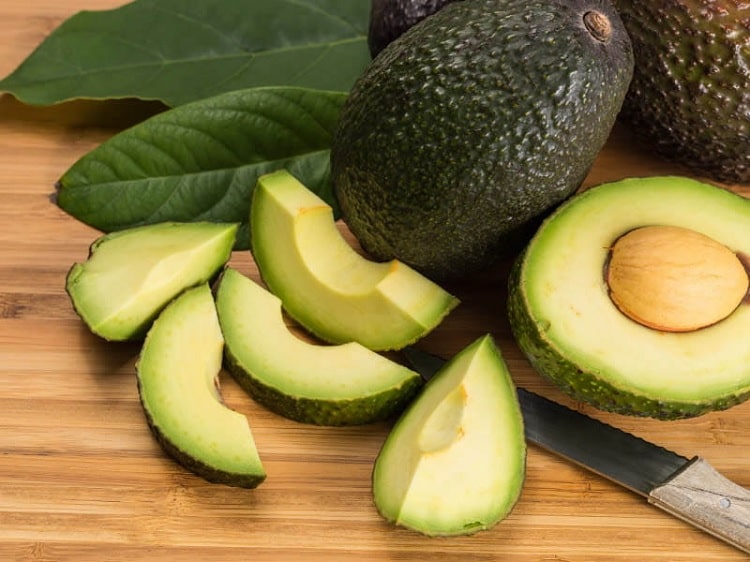
Avocado is a fruit that is considered to be a vegetable. It is essential to include avocados in your diet because of their fat-burning properties. Avocados are high in heart-healthy monounsaturated fat, which improves fullness due to slow digestion in the body.
Studies show that consuming half an avocado can help you lose belly fat. Avocados are simple to incorporate into your diet as guacamole, a salad, or a smoothie. When eating avocados to reduce weight, limit yourself to a quarter to a half of an avocado per serving.
One-half of avocado contains:
- Calories: 120
- Protein: 1.5 g
- Fiber: 5 g
- Fat: 11 g
- Carbohydrates: 6.5 g
Cabbage
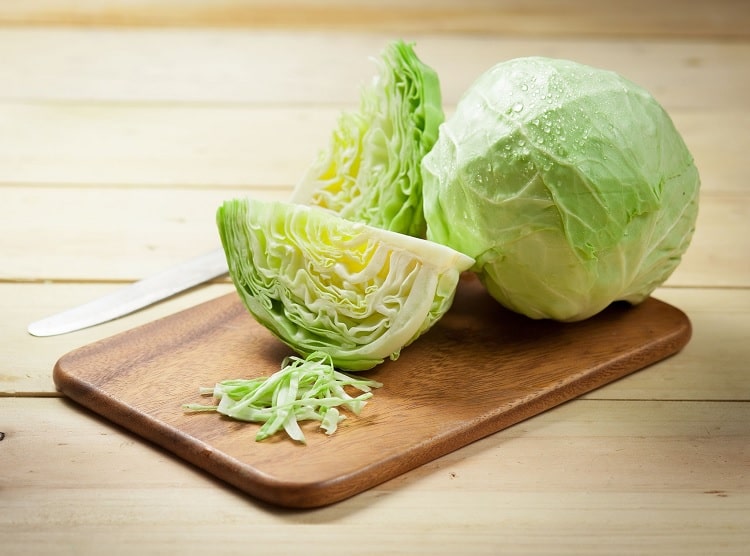
Cabbage is a type of cruciferous vegetable that is low in calories and high in fiber. The potent phytonutrients in cabbage can help prevent cell damage and reduce the risk of various health conditions like cancer, stroke, and heart disease.
Since cabbage is loaded with fiber, it helps you stay full and reduces calorie consumption. There are multiple ways through which you can incorporate cabbage into your diet. For instance, you can prepare fermented foods with cabbage, which is beneficial for your gut health.
A cup serving of cabbage contains:
- Calories: 22
- Fiber: 2 g
- Protein: 1 g
- Carbohydrates: 5 g
- Sugar: 3 g
Romaine Lettuce
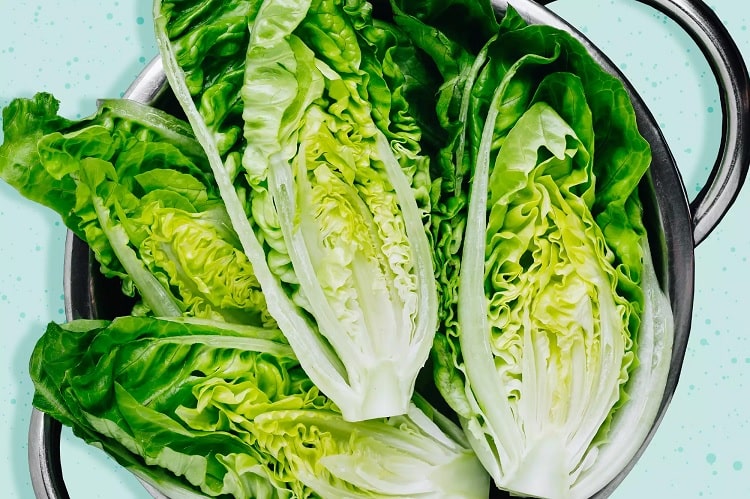
Romaine lettuce is a low-calorie vegetable that can be used in a variety of recipes for weight loss. You can use romaine lettuce in making different salad recipes like Caesar salads, wedge salads, and chop salads. Since romaine lettuce is an excellent source of vitamin K, this crispy and crunchy vegetable is good for bone health. This vegetable is also heart-healthy as it is a good source of folate.
The antioxidants in romaine lettuce help reduce the risk of inflammation, diabetes, heart disease, and certain cancers. Romaine lettuce is regarded as a vegetable that helps people lose weight because of its high nutrient density and the low number of calories. This vegetable is adaptable, reasonably priced, and excellent for weight loss. It is also rich in many different nutrients.
A cup serving of romaine lettuce contains:
- Calories: 8
- Carbohydrates: 1.5 g
- Fiber: 1 g
- Protein: 0.5 g
- Sugar: 0.5 g
Zucchini
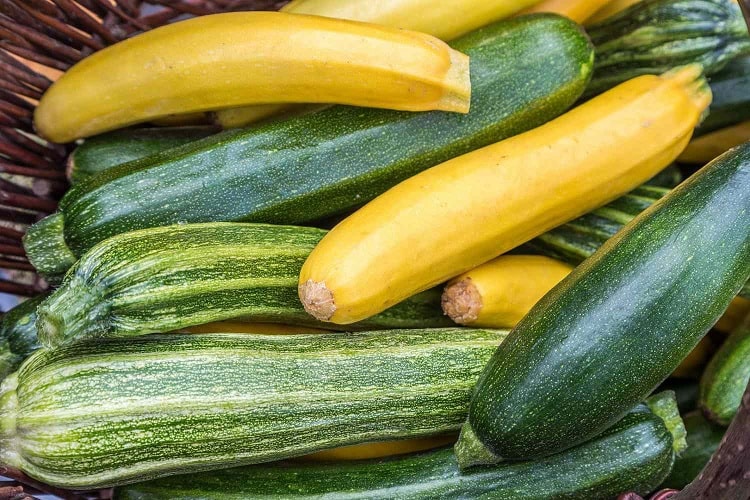
Zucchini is a low-calorie vegetable that is loaded with antioxidants, including lutein and zeaxanthin. This summer squash has a neutral taste and can be added to both savory and sweet recipes. You can include zucchini in your diet as a smoothie, an addition to oatmeal, or baked foods. Zucchini contributes to healthy digestion because of its high water and fiber content.
When you consume zucchini, your blood sugar levels can reduce, which prevents blood sugar spikes after meals. Incorporating zucchini into your diet can help manage hunger and keep your appetite at bay, thus promoting weight loss.
A cup serving of sliced zucchini contains:
- Calories: 19
- Fiber: 1 g
- Protein: 1.5 g
- Carbohydrates: 3.5 g
- Fat: 0.5
Cauliflower

Cauliflower is a filling and versatile food for weight loss. You can roast the vegetable with a drizzle of olive oil and a sprinkle of garlic powder to enjoy its flavor. This weight-loss food is low in calories but packed with fiber and protein. Including cauliflower in your diet can help you lose weight steadily.
When you consume cauliflower, you will have a fuller feeling for long hours. This prevents you from snacking on unhealthy foods, which could lead to weight gain. The high water content in cauliflower increases metabolism and supports fat burning. You can use the vegetable in a variety of recipes, including smoothies, soups, and curry.
A cup serving of cauliflower contains:
- Calories: 27
- Carbohydrates: 5 g
- Fiber: 2 g
- Protein: 2 g
Green Peas

Green vegetables are more suitable for weight loss. Green peas are loaded with fiber and protein, both of which keep you satiated and support weight loss. This starchy vegetable is nutrient-dense and provides various health benefits. Green peas are an excellent source of plant-based protein, which helps keep your appetite under control.
Since this veggie has a low-glycemic index, it can help support blood sugar control. The minerals in green peas, like magnesium, potassium, and calcium, are beneficial for your heart. You can include green peas in a variety of recipes like pasta, soup, or fried rice.
A cup serving of green peas contains:
- Calories: 117
- Fiber: 8 g
- Protein: 8 g
- Carbohydrates: 21 g
- Fat: 0.5 g
Spinach
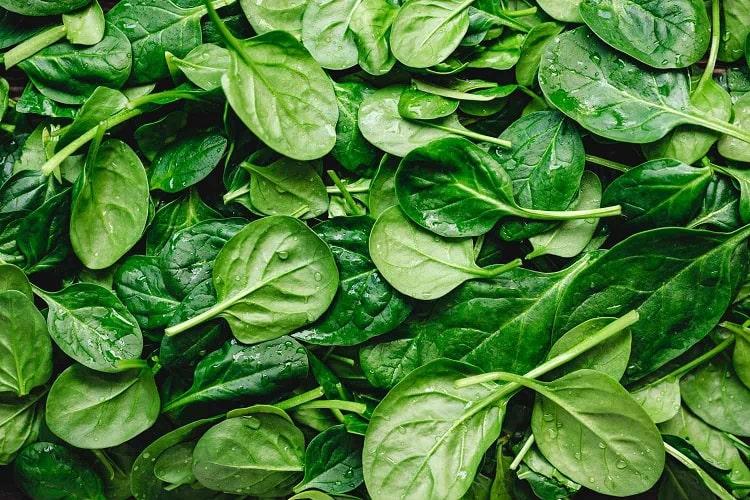
Spinach is a low-calorie food that has fat-burning capabilities. With a mild taste and texture, spinach is preferred by many around the world. This nutritional powerhouse helps reduce oxidative stress and regulate blood pressure. You can use spinach in smoothies, soups, and salads to enjoy a nutrient-rich food. As spinach is rich in insoluble fiber, it supports healthy digestion.
There are plenty of ways through which you can incorporate spinach into your diet. You can saute the veggie with a drizzle of olive oil, garlic, fresh lemon juice, and a pinch of salt and pepper for a savory recipe and consume it for weight loss.
A cup serving of spinach contains:
- Calories: 7
- Carbohydrates: 1 g
- Fiber: 0.7 g
- Protein: 1 g
Kale
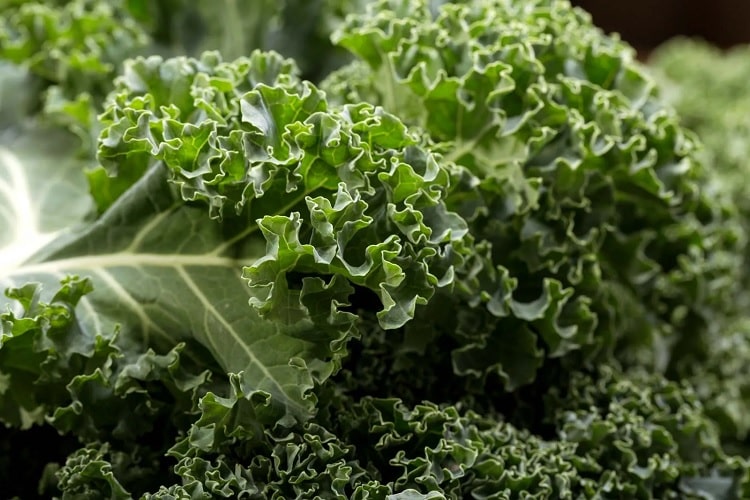
Kale is very low in calories, making it a good option for weight loss. It takes a bit longer to consume because of its rough texture, making you feel satisfied with fewer calories. You can enjoy the veggie in different ways. One of the most popular healthy ways to eat kale is baked kale chips. You may also mix kale to include filling fiber in a smoothie. Massage kale with fresh lemon juice and olive oil before setting it aside for a few minutes to soften it for your salad.
A cup serving of kale contains:
- Calories: 7
- Carbohydrates: 1 g
- Fiber: 1 g
- Protein: 0.5 g
Carrots
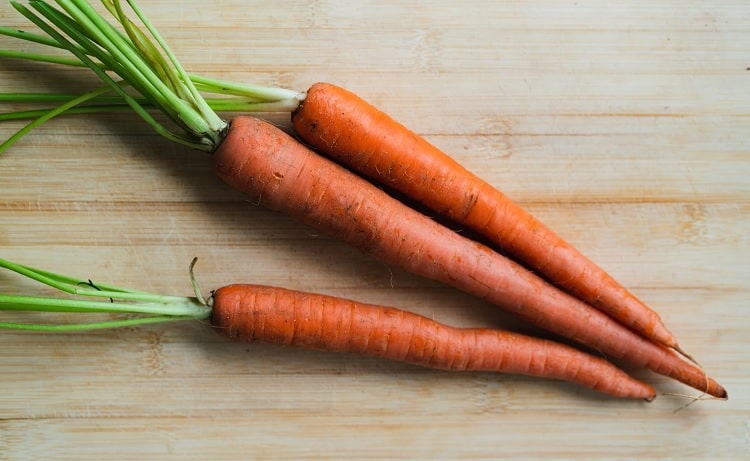
Carrots provide three times the amount of fiber found in a cup of leafy greens. You can enjoy carrots as a nutritious, crisp alternative to highly processed chips. Carrots can low-calorie veggies that have been associated with reduced cholesterol levels and improved eye health.
You can include them in your diet as a smoothie or a sweet or savory recipe. Carrots are a good option for those trying to lose weight because of their low glycemic index and a low number of calories.
A cup serving of carrots contains:
- Calories: 52
- Carbohydrates: 12 g
- Fiber: 3.5 g
- Protein: 1 g
Broccoli
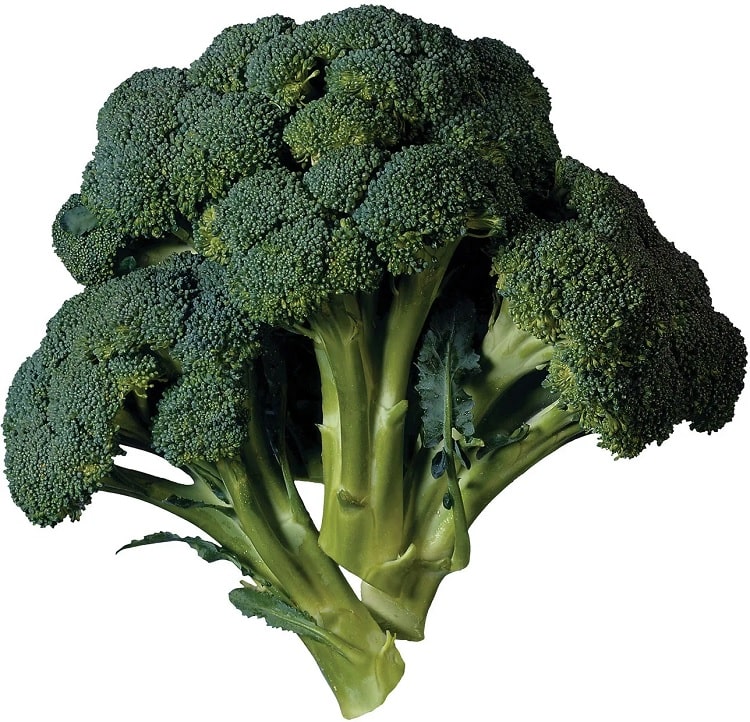
Broccoli is a weight-loss-friendly food because it is high in fiber and water. Consuming broccoli keeps you full for long hours and prevents excess calorie intake. This cruciferous vegetable is packed with antioxidants that help lower blood pressure. Broccoli’s ability to reduce inflammation is found to have a positive impact on weight loss.
Sulforaphane and indole-3 carbinol, two of the vegetable’s constituents, are responsible for the anti-inflammatory benefits. You can steam, boil, or roast this veggie and use it in various delicious recipes.
A cup serving of cooked broccoli contains:
- Calories: 54
- Fiber: 5 g
- Protein: 3.7 g
- Carbohydrates: 11 g
- Fat: 0.5 g
Bell Peppers
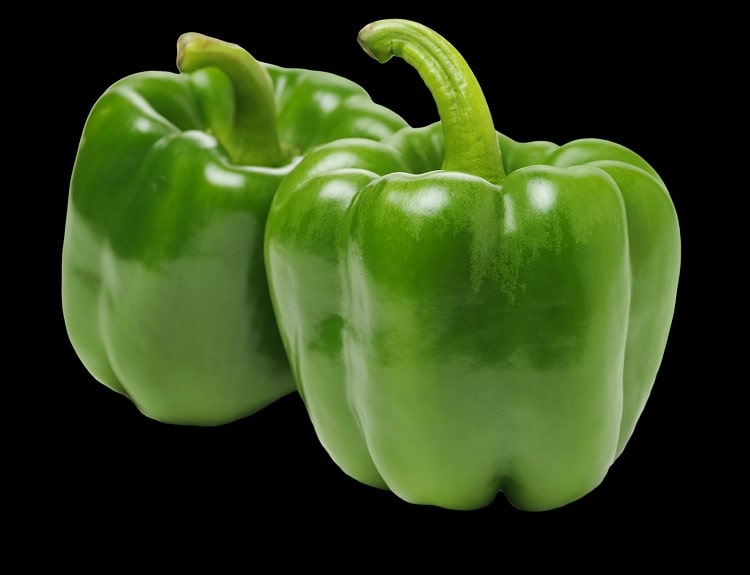
Bell peppers are high in vitamin C, a vital nutrient that is beneficial for weight loss. With a mild flavor, this veggie can be added to a variety of dishes. Eating bell peppers helps to create a sense of fullness and aid in weight loss. They are loaded with antioxidants, which reduce the risk of cardiovascular disease and certain cancers.
You can enjoy fiber-packed fajitas or healthy stuffed bell peppers for weight loss. Red bell pepper with guacamole is another popular recipe for losing weight.
A cup serving of sliced red bell pepper contains:
- Calories: 24
- Fiber: 2 g
- Protein: 1 g
- Carbohydrates: 5.5 g
- Fat: 0.3 g
Spaghetti Squash
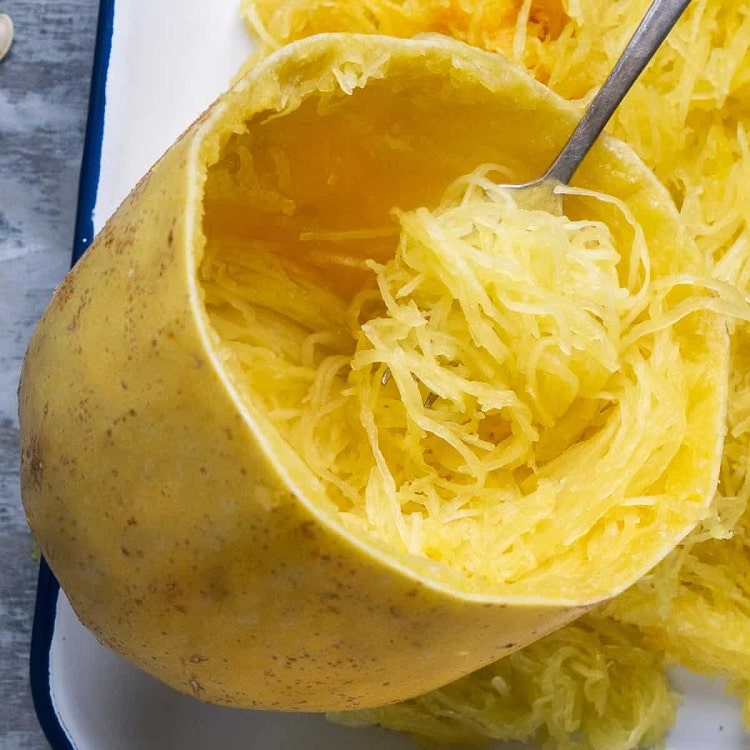
Spaghetti squash is a low-calorie, low-fat food that has a mild flavor. The fiber content in this vegetable is both filling and nutritious. Spaghetti squash does not spike blood sugar levels, making it suitable for people with diabetes. It is a nutrient-dense food packed with vitamins and minerals.
As it is rich in antioxidants, it may help prevent chronic conditions like cancer and heart disease. Because of its high fiber content, spaghetti squash moves slowly through your digestive system and supports healthy digestion. You can cook this veggie and use it as an alternative to any pasta recipe. When you pair it with other nutritious vegetables, you can enjoy a balanced meal.
A cup serving of cooked spaghetti squash contains:
- Calories: 42
- Fiber: 2 g
- Protein: 1 g
- Carbohydrates: 10 g
- Fat: 0.5 g
Cucumber
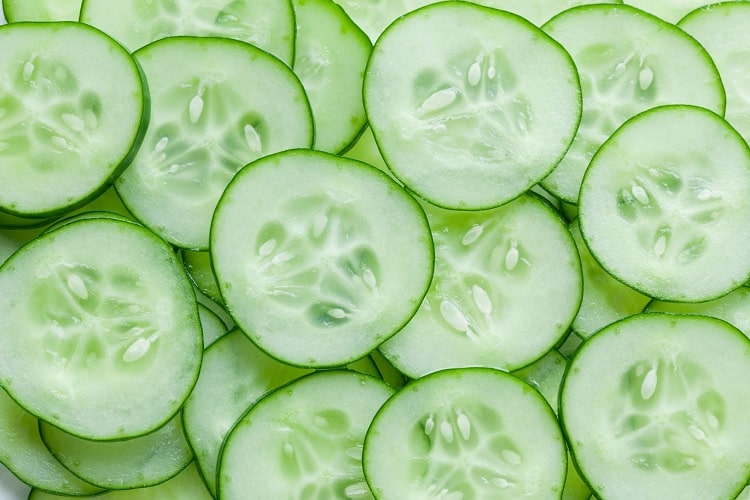
Consuming cucumbers can help with weight loss because it is high in water and low in calories. You can use them in salads, stir-fries, or smoothies. Because of their high water content, cucumbers can keep you hydrated and suppress your appetite, thus supporting your weight loss. They are loaded with vitamins, minerals, and antioxidants that support your overall health.
Cucumbers are high in folate, a B vitamin that promotes heart health. Including cucumber in your diet improves your blood sugar control. Cucumbers are a great way to add potassium and fiber to your meal.
A cup serving of cucumbers contains:
- Calories: 16
- Fiber: 0.6 g
- Protein: 0.6 g
- Carbohydrates: 4 g
Asparagus
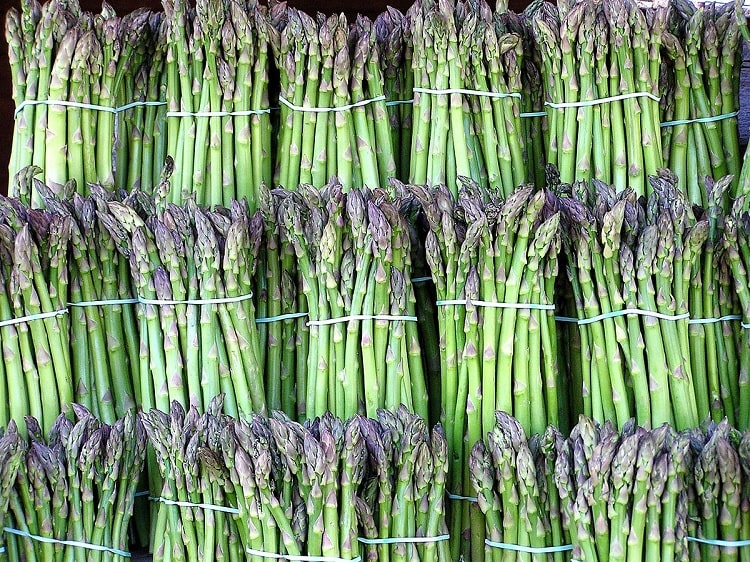
Asparagus is a superfood when it comes to burning fat. It is a low-calorie food that is packed with soluble and insoluble fiber, making it a great choice for weight loss. Asparagine, an alkaloid found in asparagus, aids in fat breakdown and promotes fat loss. You can roast the veggie and eat it with healthy dips.
A cup serving of asparagus contains:
- Calories: 27
- Protein: 2.9 g
- Fiber: 2.8 g
- Carbohydrate: 5 g
- Fat: 0.2 g
Beans
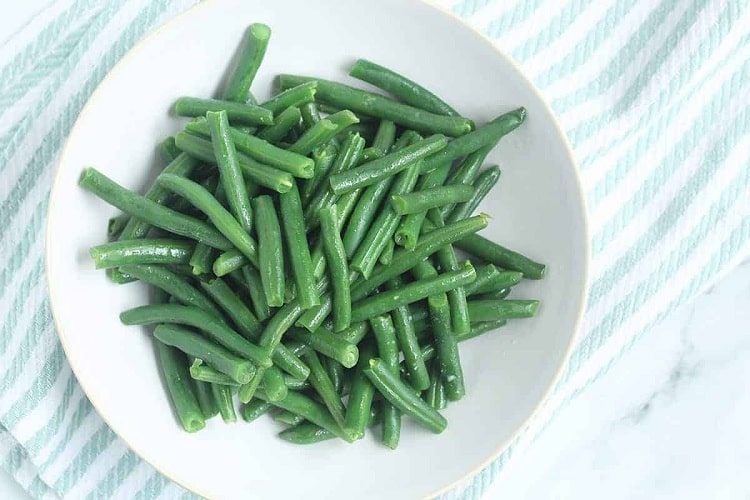
Beans are packed with soluble fiber, which reduces fat storage and aids in weight loss. As they are high in protein, they can increase satiety and reduce excess calorie intake. Beans also contain some resistant starch, which increases fat oxidation and lower fat storage. Studies show that consuming beans can help regulate blood sugar levels, which supports your weight loss efforts.
You can try different bean recipes and consume them in moderate portions for weight loss. Some of the healthy bean recipes to lose weight are corn and white bean chowder, quinoa and black beans, smashed chickpea, and an avocado salad sandwich.
A cup serving of black beans contains:
- Calories: 227
- Fiber: 15 g
- Protein: 15.2 g
- Fat: 0.9 g
- Carbohydrates: 40.8 g
Pumpkin

Pumpkin is a nutrient-dense vegetable that can promote weight loss. As it is a good source of fiber, it curbs your appetite and helps you consume fewer calories. This nutritious veggie is rich in carotenoids, which may lower the risk of stomach cancers. Consuming pumpkin that is high in potassium, vitamin C, and fiber, all of which are beneficial for heart health.
You can use pumpkin as a soup, whole grain bread, smoothies, healthy muffins, and wedges for weight loss. Pumpkin is a weight-loss-friendly food that can help you reach your fitness goals.
A cup serving of pumpkin contains:
- Calories: 137
- Fiber: 7 g
- Protein: 3 g
- Carbohydrates: 19 g
- Fat: 7 g
Mushrooms
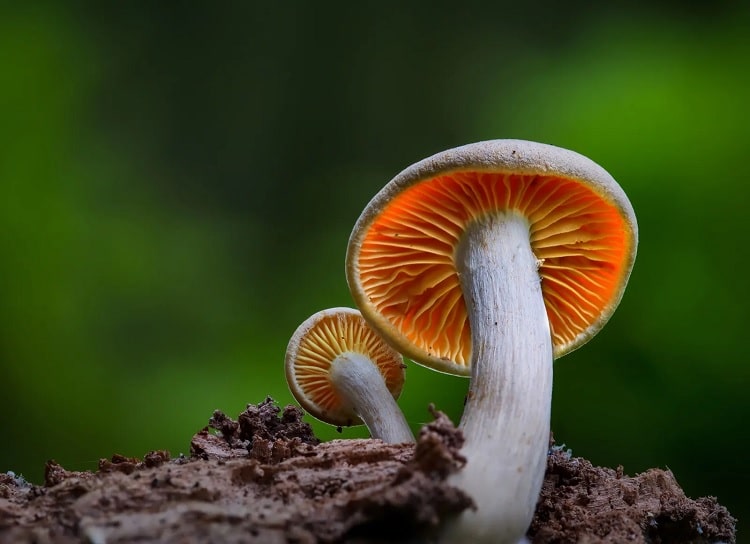
Mushrooms are an excellent choice for weight loss because of their high protein and fiber content. Consuming mushrooms can help regulate blood glucose levels and promote fat loss. Studies show that eating mushrooms increases fat burning and reduces body weight significantly.
Mushrooms can protect brain health, stimulate a healthier gut, and support a healthy immune system. You can include mushrooms in a soup, salad, or toast to lose body weight.
A cup serving of mushrooms contains:
- Calories: 21
- Fiber: 1 g
- Protein: 3 g
- Carbs: 3g
Sweet Potato
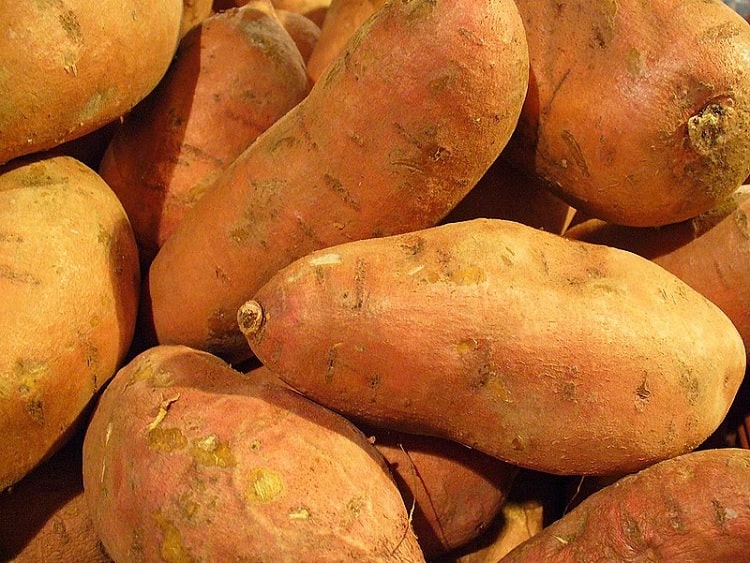
Sweet potatoes are enriched with dietary fiber, which helps you stay full for long hours and reduce excess calorie intake. The B vitamins in sweet potatoes aid in maintaining a good metabolism, which supports your weight loss efforts. Since sweet potatoes are low in calories, they can help you lose weight. The high water content in sweet potatoes suppresses your appetite and reduces fat storage.
A cup serving of sweet potatoes contains:
- Calories: 114
- Fiber: 4 g
- Carbohydrate: 27 g
- Protein: 2.1 g
- Fat: 0 g
Beets
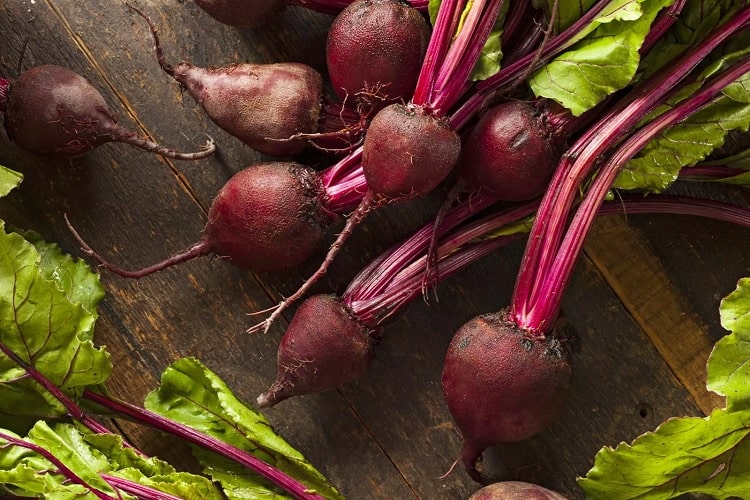
Beets are low in calories but high in dietary fiber. When paired with a healthy diet, beets can promote weight loss. As beets do not contain any fat, consuming them can be a great way to lose weight. Including beets in your diet can help improve metabolism, which enables your body to burn more calories even at rest.
A cup serving of beets contains:
- Calories: 43
- Protein: 1.6 g
- Fiber: 2.8 g
- Carbohydrates: 9.6 g
Tomatoes

Tomatoes are rich in both soluble and insoluble fibers, making them ideal for weight loss. As they are low in calories, they can help you enter into a calorie deficit and maintain your weight loss. The antioxidants found in tomatoes can protect your cells against free radical damage and reduce the risk of multiple health conditions.
A cup serving of tomatoes contains:
- Calories: 32.4
- Protein: 1.58 g
- Fiber: 2.16 g
- Fat: 0.36 g
- Carbohydrates: 7 g
The Bottom Line
Vegetables are high in water and fiber, making them a suitable choice for weight loss. You can include a variety of veggies in your diet based on your daily nutritional needs, goals, and preference. When you plan your diet with a wide range of veggies, you can be consistent in following it. Combining veggies with nutritious foods can help you lose weight naturally and sustainably.
Faqs
Green veggies like broccoli, Brussels sprouts, kale, and cabbage contain potent phytonutrients, which help reduce belly fat. Studies found that eating green veggies helped reduce belly fat in subjects.
Vegetables contain fewer calories but are packed with fiber and protein. Eating nutritious veggies thus helps you stay fuller for long hours and support weight loss.



